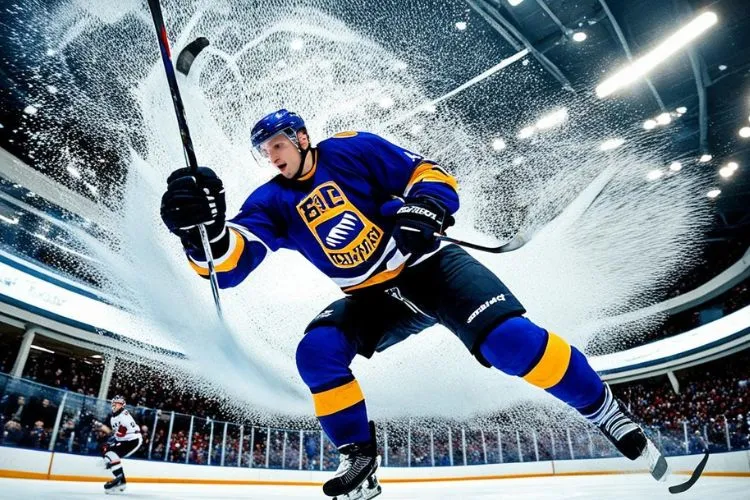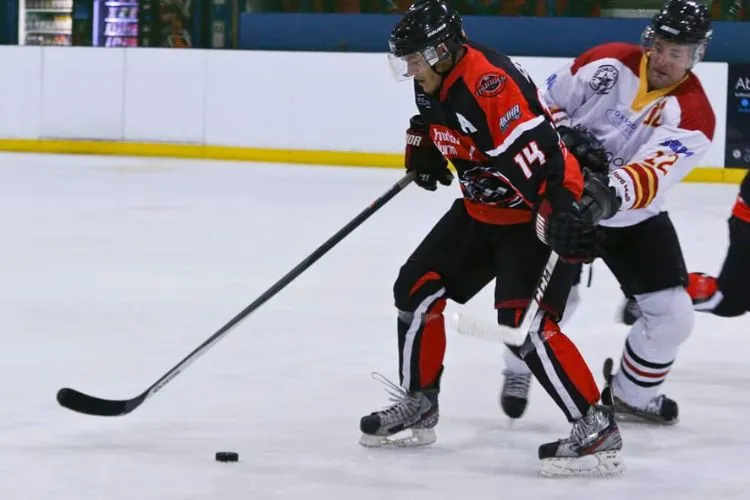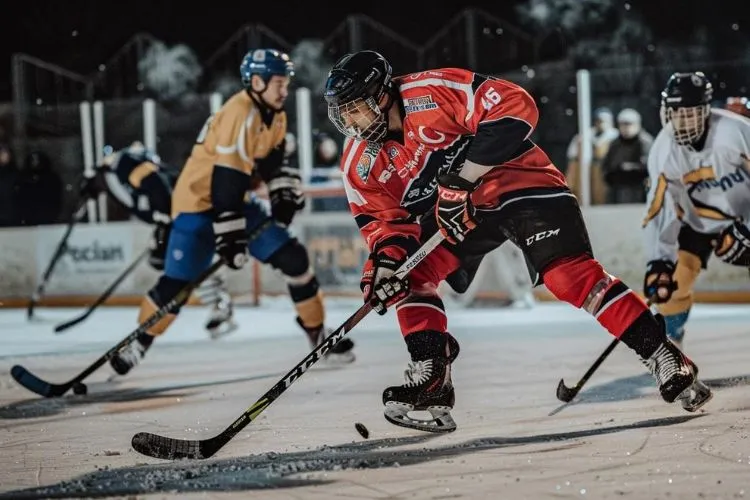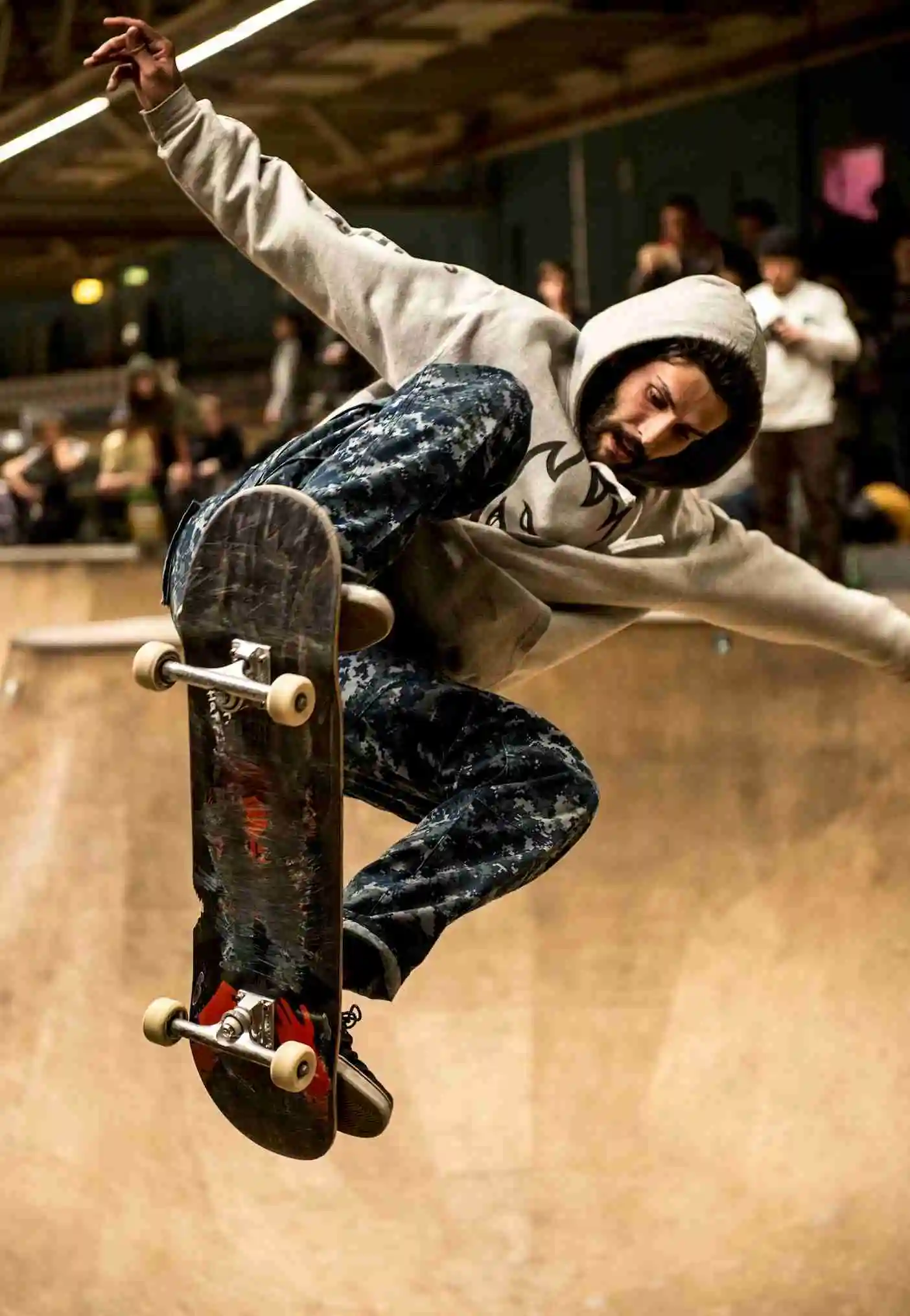Hockey combines agility, strategy, and precision within its gameplay, all framed by a detailed rulebook. One aspect that often raises questions is whether players can kick the puck. So, can you kick the puck in hockey?
While the primary answer is yes, the rule carries significant nuances particularly in how and when a puck can be legally kicked during a game.

Can You Kick the Puck in Hockey?
The sport allows players to kick the puck to control its direction or to pass it to teammates. This action can be a strategic move, helping players to reposition the puck when their stick is not available, or in scenarios where they need to quickly alter its path to continue their play.
Where Kicking is Permitted
Players often kick the puck for better placement before shooting with their stick, or to keep the puck moving while evading opponents.
This tactic is frequently seen during fast-paced play where hand-to-stick coordination is crucial but momentarily disrupted.
Restrictions on Kicking
Despite the flexibility, the rules strictly prohibit kicking the puck directly into the net to score a goal.
This restriction is primarily for safety, preventing potential injuries from more frequent and forceful kicking near the goaltender.
Exceptions and Detailed Regulations
While players cannot score by kicking, goals resulting indirectly from a kicked puck are valid if the puck subsequently hits any other player, including the goalkeeper, before entering the goal.
The interpretation of these situations often requires official reviews, especially when the intention behind the puck’s movement is ambiguous.
Reviewing Kicked Goals
In games, particularly at competitive levels like the NHL, review processes involve detailed video analysis to determine whether a goal from a kicked puck was intentional or accidental.
This decides if the goal stands or is disallowed.
Player and Coach Perspectives on Kicking

Players and coaches often view the ability to kick the puck as an essential skill, adding depth to the game’s strategy. Effective use of the feet can be pivotal in maintaining possession and creating opportunities.
Training Focus
Skills training for players includes improving their puck control with skates. Drills that enhance foot-eye coordination are integral, teaching players to seamlessly switch between skates and sticks for optimal control.
Insights from Fans and Sporting Analysts
Hockey fans and analysts often debate the use of kicking in games. While some applaud the skill involved, others express concerns about the potential for rough play or inconsistencies in how rules are enforced.
Fan Engagement
Discussions among fans, whether in forums or during live games, reflect a mixture of admiration for the skillful use of kicking and concerns about its implications on game integrity and player safety.
Historical Context
Evolution of the Kicking Rule
The regulation surrounding the kicking of the puck in hockey has evolved significantly, reflecting the sport’s ongoing adjustments to ensure fairness and player safety.
Initially, rules regarding puck kicking were loosely defined, giving players considerable latitude.
Over time, as the game became faster and more competitive, specific amendments were introduced to address the potential for injury and the integrity of scoring.
These changes were often prompted by technological advances in equipment and a deeper understanding of game dynamics.
The International Ice Hockey Federation (IIHF) and the National Hockey League (NHL) have periodically revised these rules to balance play, often after extensive debate and analysis of game outcomes.
Notable Incidents
One pivotal moment illustrating the impact of kicking the puck occurred during a critical playoff game, where a goal scored by a deliberate kick led to widespread controversy and debate among fans, players, and officials.
This incident not only highlighted the challenge of enforcing the rule but also sparked a significant revision in the criteria for a legal goal, tightening the regulations around kicking motions.
Such incidents serve as touchstones in the sport’s history, prompting reevaluation of the rules to maintain the game’s integrity and competitive balance.
You may also find useful: How to Tape a Hockey Stick? | Ice Hockey Rules
Technical Insights

Physics of Kicking the Puck
Kicking the puck effectively in ice hockey entails a deep understanding of physics principles such as force, friction, and momentum.
The ideal kick requires a player to gauge the puck’s weight and the slick ice surface to apply the right amount of force.
The angle at which the skate blade strikes the puck can significantly alter its trajectory, influencing accuracy and speed.
Mastery of these mechanical variables is crucial for a player looking to redirect the puck without using their stick, and must be executed within the split-second pace of the game.
Comparative Analysis
In contrast to ice hockey, sports such as soccer and field hockey allow direct scoring through kicks, with the latter imposing some restrictions. Soccer players utilize the higher friction of grass and a larger ball to achieve greater control over power and spin.
Field hockey players, on the other hand, face the challenge of balancing on turf while manipulating a smaller ball with intricate stick work.
While the fundamental physics of kicking remain consistent across these sports, the unique elements of each game—such as the surface, ball size, and rules—significantly shape how a kick influences gameplay.
Ice hockey’s combination of a small puck, slick ice surface, and skates demands exceptional precision and balance, setting its kicking dynamics apart from its counterparts.
Additional Resources
For more detailed explanations or updates on the rules, hockey enthusiasts can refer to the official NHL Rulebook or similar guides provided by other hockey organizations.
Frequently Asked Questions (FAQs)
Can players kick the puck to a teammate?
Yes, players are allowed to kick the puck to teammates, helping to maintain flow during play.
What happens if a kicked puck accidentally enters the goal?
If a puck kicked by a player enters the goal after making contact with any other player or the goalie, the goal may be allowed.
How is a ‘kick’ defined in hockey rules?
A kick is typically defined as a deliberate motion of the foot or skate that directs the puck.
Can kicking lead to penalties?
Kicking the puck is generally not penalized unless it is directed violently towards another player, which is rare.
Are kicking rules consistent across all hockey leagues?
While the fundamental rules are similar, minor variations can exist across different leagues and levels of play.
Conclusion
Kicking the puck in hockey is permissible within certain constraints, primarily excluding the act of scoring directly from a kick.
This rule aims to preserve the fluid and strategic nature of hockey while ensuring player safety. Understanding this rule allows players and fans alike to appreciate the depth and complexity of the game.

Matthew James is a passionate skater who wanted to create a platform to share his love for skating with others. With a vision to create a vibrant community of skaters, he aims to provide a space where skaters of all levels can connect, learn, and grow together.
